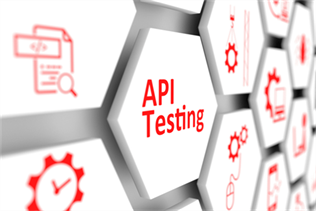Content
Some SaaS subsets have more complex pricing models though, so be sure to do your own research. Platform-as-a-service is used as a way to build new products on top of your already existing network. But SaaS products are entirely managed by the vendor and ready-to-use by your teams. The trend shows that there is a slight decrease in SaaS, and a slight increase in IaaS and PaaS, which is likely to continue over the next years. This may be due to companies acknowledging IaaS for being more flexible and customizable when compared to ready-to-use SaaS solutions.
In order to fully grasp PaaS technology, it helps if you understand its relationship to the other two tiers—SaaS and IaaS. IaaS is often the first step toward operationalizing cloud services for companies. The flexibility and similarities to on-premise infrastructure allows an easier transition.

If you are looking to migrate an application as-is from an on-premises data center to the cloud, choose the IaaS model. You will be able to proceed with the migration with minimum changes. These entire cloud application services are the most common form of cloud computing.
What Is Cloud Management?
Thus, let us first look at the traditional on-premises world of content management systems. Datto has recently engaged Miercom to conduct an independent, third-party performance assessment of Datto SaaS Defense against comparable advanced threat protection solutions. Developers have limited control over the infrastructure behind the platform. Developers can leverage IaaS to set up VMs for testing and development environments much more quickly than they would in on-prem IT setups. Organizations can quickly scale up or down in response to business requirements. If you are on a tight budget, PaaS solutions can be very cost-effective compared to hiring an entire DevOps team.

IaaS makes full use of the cloud to give you continuous and malleable access to resources as your needs spike or drop. Cybersecurity is the protection of internet-connected systems such as hardware, software and data from cyberthreats. Businesses can save money with software as a service because they don’t have to design and develop the software themselves. It makes sense for companies to use SaaS products that meet their business requirements because they can quickly be more productive.
The Beginner’s Guide To Building A Saas Customer Service Team
SaaS providers are responsible for maintaining the entire IT infrastructure behind their sophisticated apps. Servers, networking, database management, virtualization, middleware – all these are managed by a SaaS vendor. For small to medium-sized businesses, you may not have the IT strength for the flexibility of IaaS. Technology providers can help a managed service provider with applications, networks, data security, and more.

With both IaaS and SaaS, the cloud service providers manage servers, networking, virtualization and storage. The “as-a-service” models are typical of the second wave of Web 2.0, built on top of cloud computing. Indeed, these models’ basic premise is to offer a solution to the final customer without having to host it on-premise, with complex implementations and large overhead. SaaS has wider applications toward end-users, also in non-technical departments.
In addition, SaaS solutions hit the OpEx budget, not the CapEx, making it easier for businesses to fit SaaS apps into the budget. SaaS is the most popular option for B2B companies in the cloud computing market because of its many benefits. SaaS businesses offer several benefits to their customers, whether that be for finding a ride, or a song they like, hosting huge amounts of data, or running multiple field agents.
Saving On Infrastructure
If there’s an outage or issue with the hardware or operating system, the software will go out with it. With a PaaS, developers build their app right on the platform, then deploy it immediately. Because it provides the greatest amount of control, IaaS tools are also the most hands-on. IaaS firms only provide the servers and its API, and everything else must be configured on your end.

SaaS is hosted on remote servers and fully managed, updated, and maintained by a third-party vendor. This results in less responsibility but also less control for the end user. This results in less responsibility but also less control for the end-user. Below are a few of the biggest benefits that speak for adopting PaaS as a cloud computing model. The diagram “As-a-Service” below illustrates the differences between IaaS vs PaaS vs SaaS and the level of vendor management that you get with each service model. Learn all about IaaS vs PaaS vs SaaS and how they help create a cloud-computing environment that is tailored to your needs.
Saas Use Cases
Simply fire up a browser, log on to the vendor’s website, and unlock all the capabilities on offer. Software as a service vendors host the applications, making them available to users via the internet. With SaaS, businesses don’t have to install or download any software to their existing IT infrastructures. SaaS ensures that users are always running the most up-to-date versions of the software. Infrastructure-as-a-Service is a form of cloud computing service that offers compute, storage and networking resources on-demand, usually on a pay-as-you-go basis.
Where maintaining in-house infrastructure might require countless hours of audits and compliance procedures, some IaaS providers handle all of this for you. SaaS, PaaS and IaaS are all under the umbrella of cloud computing . Think about them in terms of out-of-the-box functionality and building from the bottom up. Our delivery teams keep helping businesses launch new features, release updates frequently and safely, and modernize their SaaS platforms. This list of PaaS vendors we’ve compiled is by no means exhaustive.
- On the other hand, PaaS lets you tackle advanced high-level programming by streamlining and simplifying the process.
- SaaS businesses offer several benefits to their customers, whether that be for finding a ride, or a song they like, hosting huge amounts of data, or running multiple field agents.
- The organization or the PaaS cloud vendor manage the servers, storage and networking, while the developers manage the applications.
- IaaS is a flexible and scalable solution that enterprises can use to create and shrink resources on an as-needed basis.
- Sunshine is an open platform that’s able to work in tandem with all of your other business applications.
Agile development helps to organize the work of the team, take into account the wishes of the customer, and also allows you to make adjustments at any stage. Its scalability also brings great advantages for organizations experiencing hyper-growth. A SaaS solution may not be compatible with other tools you’re already using, so integrations can cause major issues. There are plenty of narratives picturing this model as a technology that has reached its peak of effectiveness while others, rightfully so, point to a few disadvantages that come with using this model.
Saas, Paas, Iaas Market Share Breakdown
With IaaS, end-users manage their applications, the platforms they use to build them, and the virtual resources that keep everything running. Purchasing an IaaS solution means renting IT infrastructure similar to traditional computer hardware but operating in a virtual environment. Instead of buying physical hardware, you can rent the infrastructure you need as a virtual service through an IaaS vendor. XaaS encompasses all cloud services that customers can pay for and use over the Internet. Troubleshooting is more difficult because IaaS customers do not have complete visibility to the cloud service provider infrastructure. With a Software-as-a-Service product, you are getting the most service from your third-party provider in terms of software management and maintenance.
What Are The Differences?
A user can directly access the application from any device without worrying about the cloud infrastructure, its maintenance, or anything else. All of this is protected and managed by the cloud service providers. You can check the businesses like Wellyx that are providing SaaS to their valuable clients. While traditional solutions require you to manage your own IT infrastructure and in-house software, IaaS provides a pay-as-you-go approach for storage, networking, and virtualization. In addition, PaaS includes even more services like hardware and software development tools available via the web.
The vendor manages all upgrades and patches to the software, usually invisibly to customers. Typically, the vendor ensures a level of availability, performance and security as part of a service level agreement . Customers can add more users and data storage on demand at additional cost.
Since the infrastructure is under the control of the service provider, outages in the service provider controlled infrastructure can affect the customer infrastructure. You will need to decide how much you want to manage yourself and how much you want your service provider to manage when deciding between https://globalcloudteam.com/. Here’s a graphical representation of how the three models compare in terms of who manages what.
How To Choose Between Saas Vs Paas Vs Iaas
An IaaS provider typically manages the physical infrastructure, including servers and storage, while the client manages everything else, including operating systems and virtual machines. Software as a Service is a web-based software deployment model that makes the software accessible through a web browser. As a user of SaaS software, you don’t care where the software is hosted, which operating system it uses, or which language it is written in.
In the long term, moving to the cloud platform will enable companies to outrun the competition and respond more quickly to changing market needs. With clouds, businesses will be able to focus on strategic tasks without being distracted by the administration and maintenance of the IT infrastructure. IaaS is suitable if the company has a non-linear demand for resources. During the holidays or sales, the site falls – there are too many buyers, and the servers cannot stand it.
How can retailers create personalized customer experiences online? And what do you need to know to keep up with your customer expectations? Smaller healthcare companies stand to grow strong on a foundation of great customer experiences. This is a positive for data you are less SaaS vs PaaS vs IaaS worried about but can raise concerns over data governance. However, instead of getting software over the Internet, you get a platform for creating your own software. Every service you acquire to use temporarily and let go of when you’re done can use the “as a service” suffix.
IaaS, PaaS, SaaS, and even on-prem IT solutions are not mutually exclusive. You can use more than one, and many organizations use all of them with on-prem IT infrastructures. Obviously, whatever solution the organization chooses largely depends on the functionality that it needs and the level of IT expertise it has. The organization is limited by the PaaS providers’ terms of service, so they cannot extensively customize how the platform works on their end. Cloud computing has emerged as an essential IT infrastructure component across all industry verticals because it allows businesses to scale and maintain flexibility while focusing on core operations. The need for quick wins is the number one scenario where SaaS solutions would be most beneficial—quick launch of apps without having to worry about server or software issues.

0 Comments